Welding Technology
Love to work with your hands? Looking for a career field with high wages in one of the last remaining true industrial crafts? Skilled welders are in high-demand and welding offers you solid skills that will benefit you for a lifetime no matter where your future takes you.
Great welders are needed all over the world, from the manufacturing plant floor to the tallest skyscrapers in Tokyo to the bridges spanning Australia's widest rivers. With this program, you will be able to take pride in the quality of your welding handiwork and a sense of achievement in problem solving different situations.
In this program you will learn the art and technology of joining metals together with heat, using special equipment to perform different welding processes such as oxy-fuel cutting, gas metal arc, gas tungsten arc, plasma arc cutting and shielded metal arc welding. You will also learn to accurately fabricate a project, work from blueprints, repair broken parts, problem-solve welding dilemmas and use math and measurement skills to set up and lay our the parts used for the welding project.
Program Syllabus
Our mission is to provide students with the essential knowledge, skills, and work habits to excel in their careers and future learning.
Course
Welding Technology
National Career Cluster: Manufacturing
Michigan Career Pathway: Engineering/Manufacturing & Industrial Technology
Instructor
Jeff Grossman
517.244.1398
MA in Curriculum & Instruction
BS in Industrial Arts Education
Full Vocational Authorization
Continuing Education Certificate
Craig Barnes, Instructional Assistant
Types of Credit
- Fourth year math credit
- Elective Credit: Recommended by WTC; awarded by sending school
- Second year World Language credit
Articulation Agreements
Lansing Community College
Ferris State University
Washtenaw Community College
Davenport University
Baker College
Requirements/Prerequisites
- Good attendance and work habits
- Positive attitude and interest in the welding industry
- Good communication skills
- Physical & mental aptitude
- Good eye-hand coordination
Since students will receive training with employers, they must:
- Be able to pass a physical & eye exam
- Adhere to dress, safety and grooming requirements
- Have transportation to and from the work experience site
- Have been recommended by their teachers
Program Description
In Welding Technology, you can choose from two areas of study: Production Welder or Combination Welder.
Production Welder: In the production welder program, students will learn approximately 110 welding skills while performing about 170 welds. The student can choose to complete any part or the entire program. Basic skills in oxyacetylene welding, cutting and brazing are taught along with stick (SMAW) and MIG (GMAW) welding processes. In addition to problems in troubleshooting of welds, students learn fabrication and repair of projects using different welding processes and techniques. Areas related to welding, including math, measurement, layout, blueprint reading, electricity, machine tool, metallurgy and problem solving, are also covered in the program. There are 630 hours to complete the Production Welder program.
Combination Welder: In the combination welder program, students will learn approximately 130 welding skills while performing about 200 different welds. This program is the entire production welder program only more comprehensive because it includes TIG (GTAW) welding. The students can choose to complete any part or the entire program. Basic skills in oxyacetylene welding, cutting and brazing are taught along with stick (SMAW), MIG (GMAW) and TIG welding processes. In addition to problems in troubleshooting of welds, students learn fabrication and repair of projects using different welding processes and techniques. Areas related to welding including math, measurement, layout, blueprint reading, electricity, machine tool, metallurgy and problem solving, are also covered in the 730 hour program.
Course Topics
- Manufacturing Core (MT)
- Safety Rules
- Oxyacetylene Processes
- Shielded Metal Arc Welding
- Gas Metal Arc Welding
- Blueprint Reading
- Metallurgy
- Testing & Inspection of welds
- Welding codes: AWS D1.1-08
- Basic Electricity
- Related Processes
- Troubleshooting/Problem Solving
- Welding Options
- Welding Certifications
- National Standards
- Gas Tungsten Arc Welding (Combination Welder)
Exit Outcomes
Production & Combination Welding
- Demonstrate safety awareness by passing a safety test.
- Demonstrate ability to safely and properly use oxyacetylene torch.
- Demonstrate ability to perform basic oxyacetylene welds.
- Demonstrate the ability to perform basic oxyacetylene cutting skills.
- Demonstrate the ability to perform basic oxyacetylene brazing skills.
- Demonstrate the ability to perform basic setup of shielded metal arc welding machines.
- Demonstrate skill in SMAW in all four welding positions with all four joints.
- Demonstrate ability to properly set up gas metal arc welding machine.
- Demonstrate ability to MIG weld different joints in all four positions.
- Demonstrate ability to read and interpret simple blueprints.
- Demonstrate ability to test welds using destructive and non-destructive methods.
- Demonstrate ability to operate hand and power tools safely and accurately.
- Demonstrate ability to problem solve in fabricating or repair of a welding project.
- Demonstrate ability to use math and measurement as required in completing welding jobs.
- Demonstrate acceptable work habits, in 10 areas.
Production Welding
- Demonstrate ability to fabricate and repair projects with OAW, OAC, PAC, OAB, SMAW and MIG welding.
Combination Welding
(same outcomes as the Production Welder including the below)
- Demonstrate ability to properly set up TIG machines.
- Demonstrate skill in TIG welding different joints on various metals.
- Demonstrate skill in cutting metals with the plasma arc cutting torch.
- Demonstrate ability to perform cutting operations with the carbon air arc torch.
- After successfully completing the production or combination welder occupation at WTC, students will be able to take the State of Michigan welding certification test. This certification will qualify students for higher paying jobs in industry.
- Students in this program may participate in Skill USA, an endorsed state and national student organization which promotes the growth and development of students' skills and knowledge. This group sponsors regional, state and national competitions.
- Students may compete at Ferris State University for a state wide annual Welding competition.
- Students may enter the annual Michigan Industrial Technology Education Society (MITES) or Lincoln Electric competition.
Work Based Learning Opportunities
- Two weeks on-the-job work experience or co-op in a welding shop
- Employer Advisory Board
- Industry field trips/tours
- Occupational speakers
- Weld testing - destructive and non-destructive weld evaluation
- 1 – 3 day Job Shadow in a welding business
| Item | Points/Percentage |
|---|---|
| Work Habits (includes attendance) | 35% |
| Academic | 25% |
| Lab | 40% |
| Total: | 100% |
- Work Habits: Points based upon your attitude, quality, professionalism, motivation, resources, and attendance.
- Academic (Tests, quizzes, and Worksheet grades): Your instructor may choose to give you a grade for all classroom work you take for the program.
- Lab (Project Grades): You will be graded on completed welding modules.
A = 93-100%
B = 83-86%
C = 73-76%
D = 63-66%
A- = 90-92%
B- = 80-82%
C- = 70-72%
D- = 60-62%
B+ = 87-89%
C+ = 77-79%
D+ = 67-69%
E = 59 or below
Photos from the Welding Technology Program . . .
-
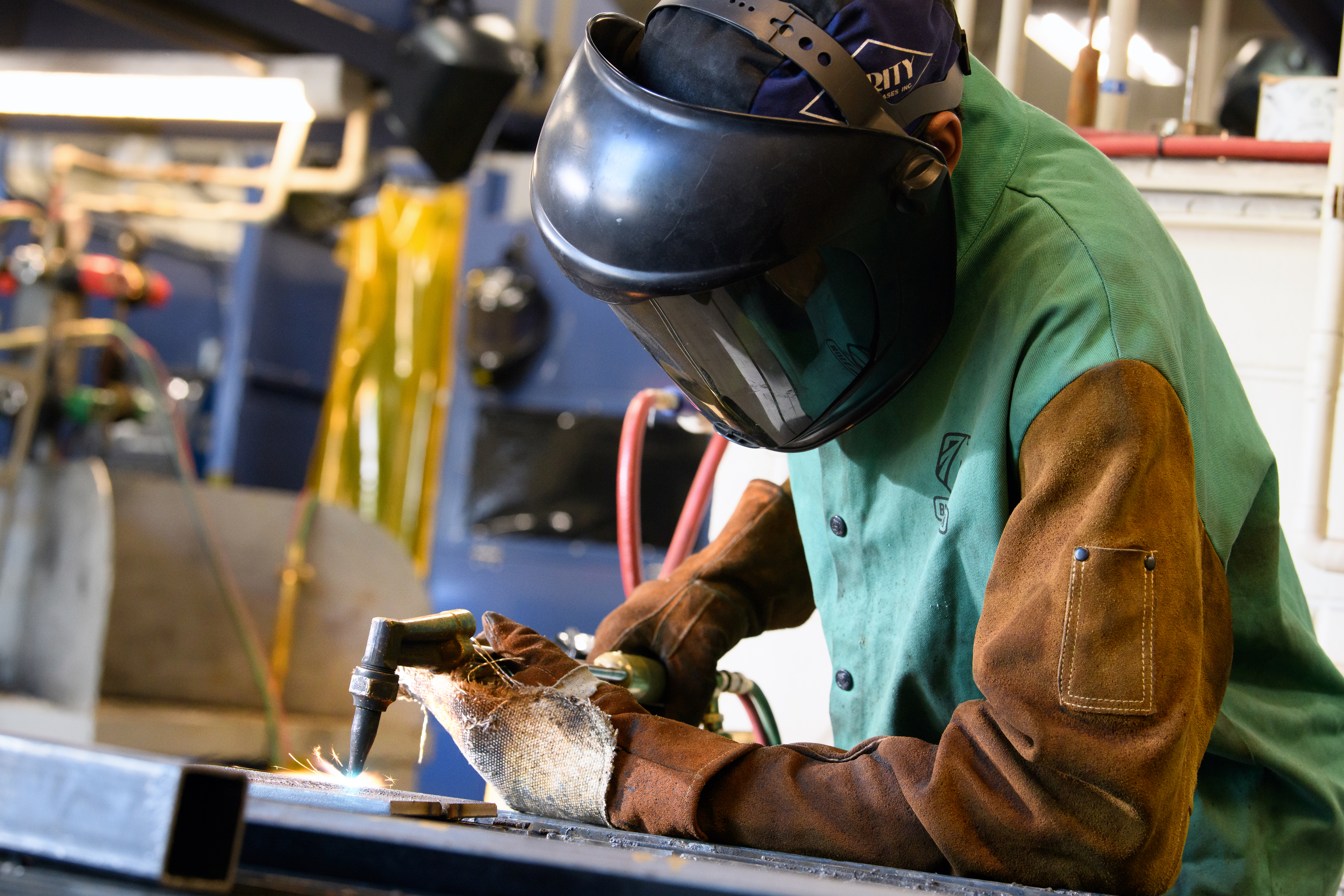 Click to see a larger version
Skip to end of gallery
Skip to start of gallery
Click to see a larger version
Skip to end of gallery
Skip to start of gallery
-
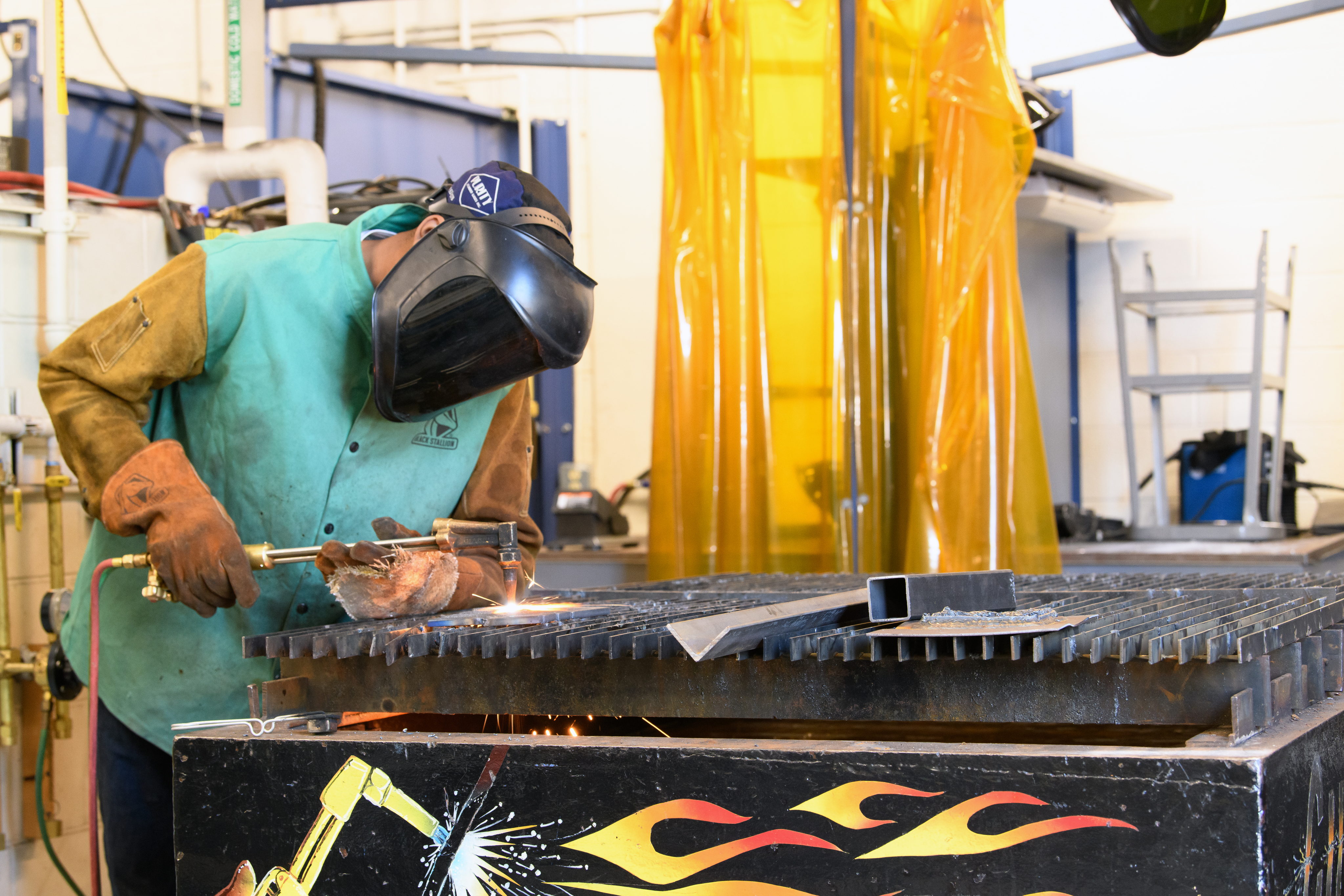 Click to see a larger version
Skip to end of gallery
Skip to start of gallery
Click to see a larger version
Skip to end of gallery
Skip to start of gallery
-
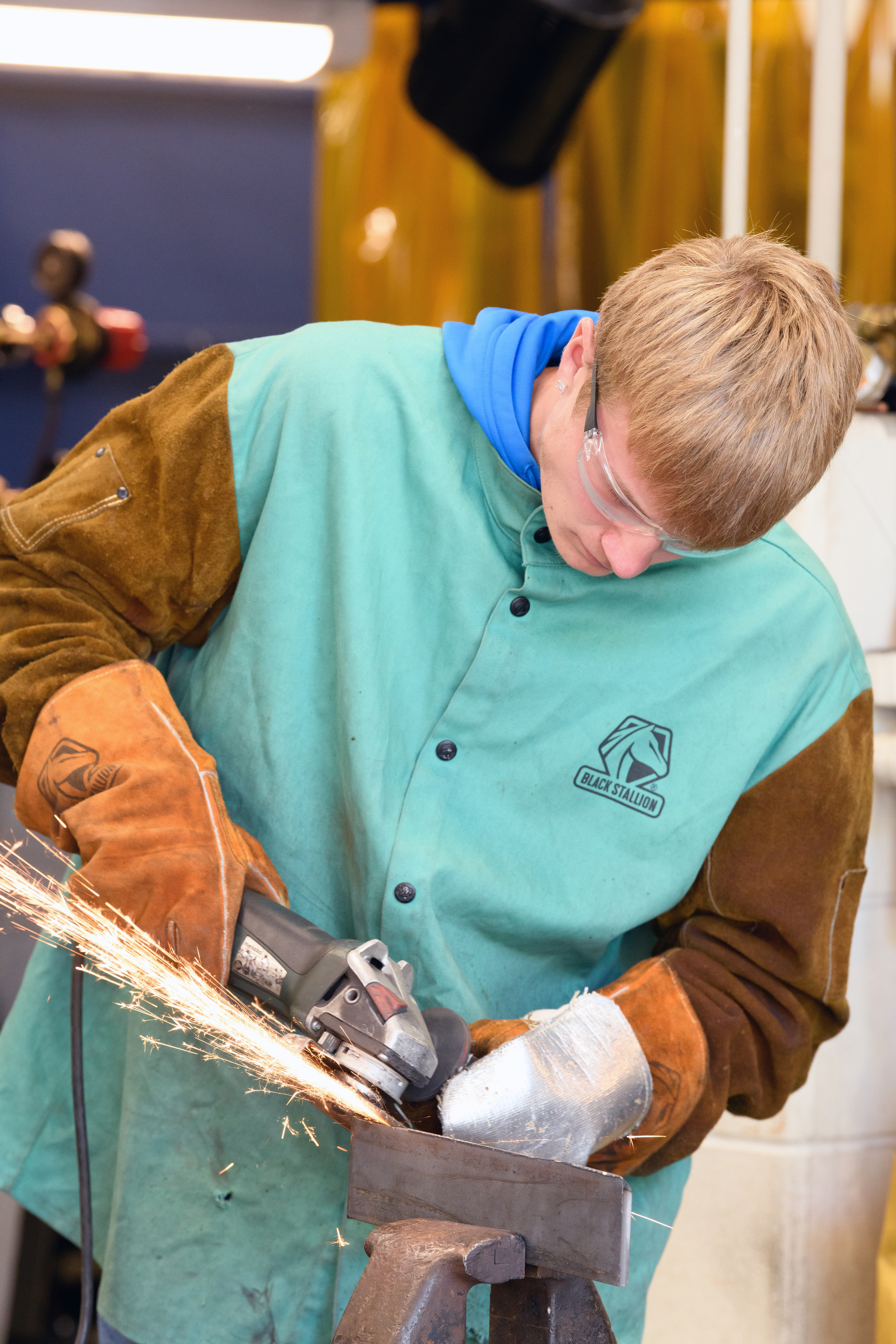 Click to see a larger version
Skip to end of gallery
Skip to start of gallery
Click to see a larger version
Skip to end of gallery
Skip to start of gallery
-
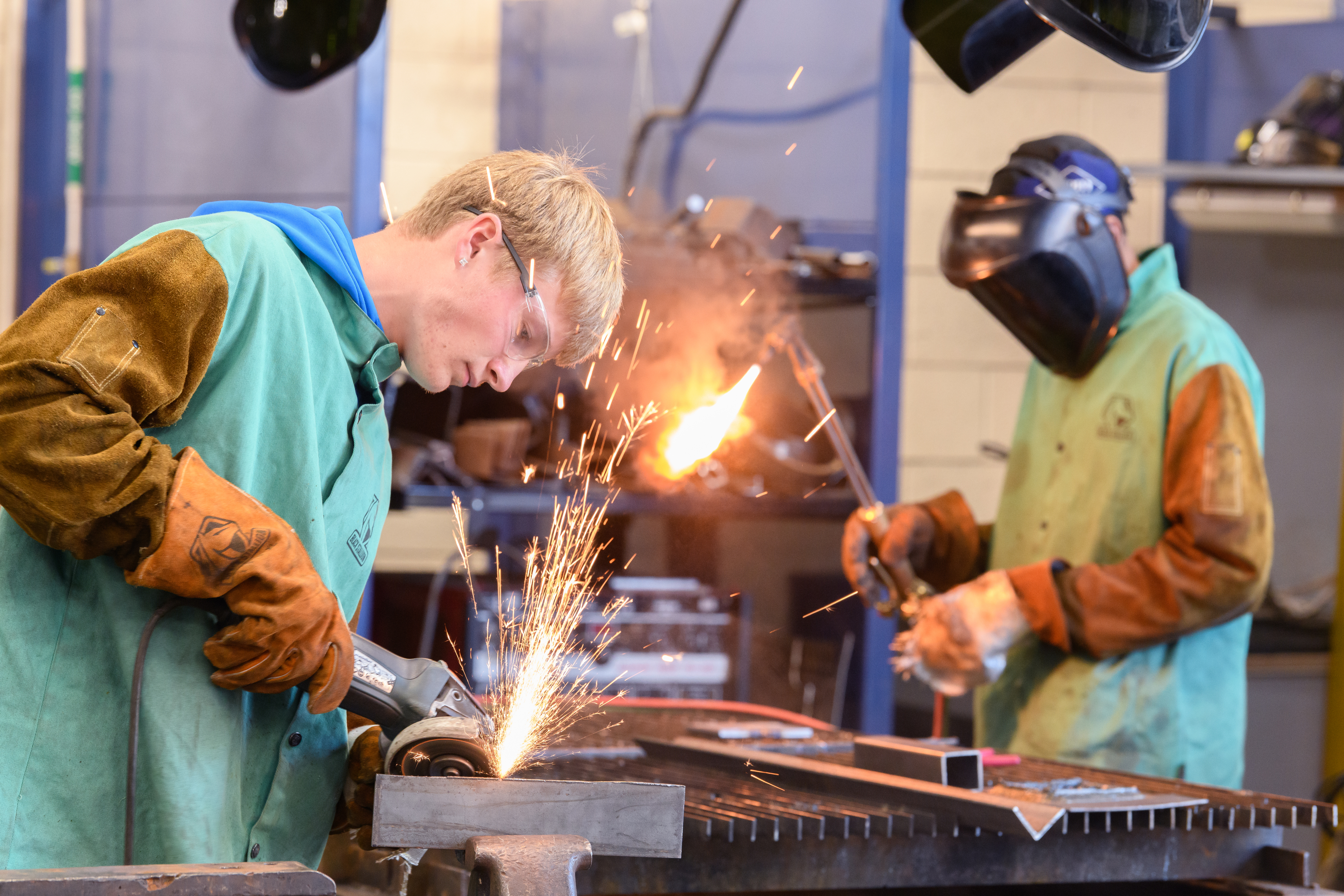 Click to see a larger version
Skip to end of gallery
Skip to start of gallery
Click to see a larger version
Skip to end of gallery
Skip to start of gallery
-
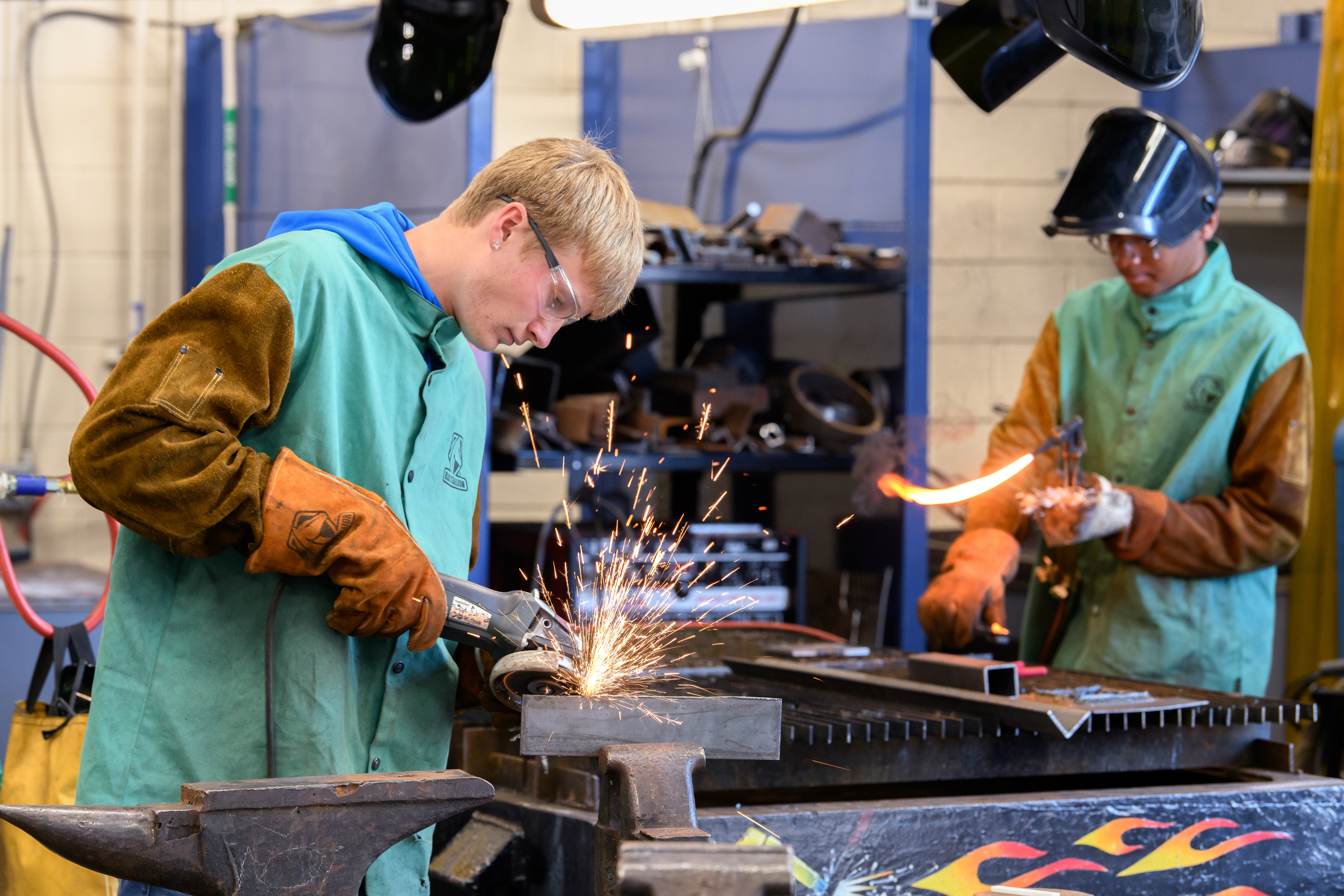 Click to see a larger version
Skip to end of gallery
Skip to start of gallery
Click to see a larger version
Skip to end of gallery
Skip to start of gallery
-
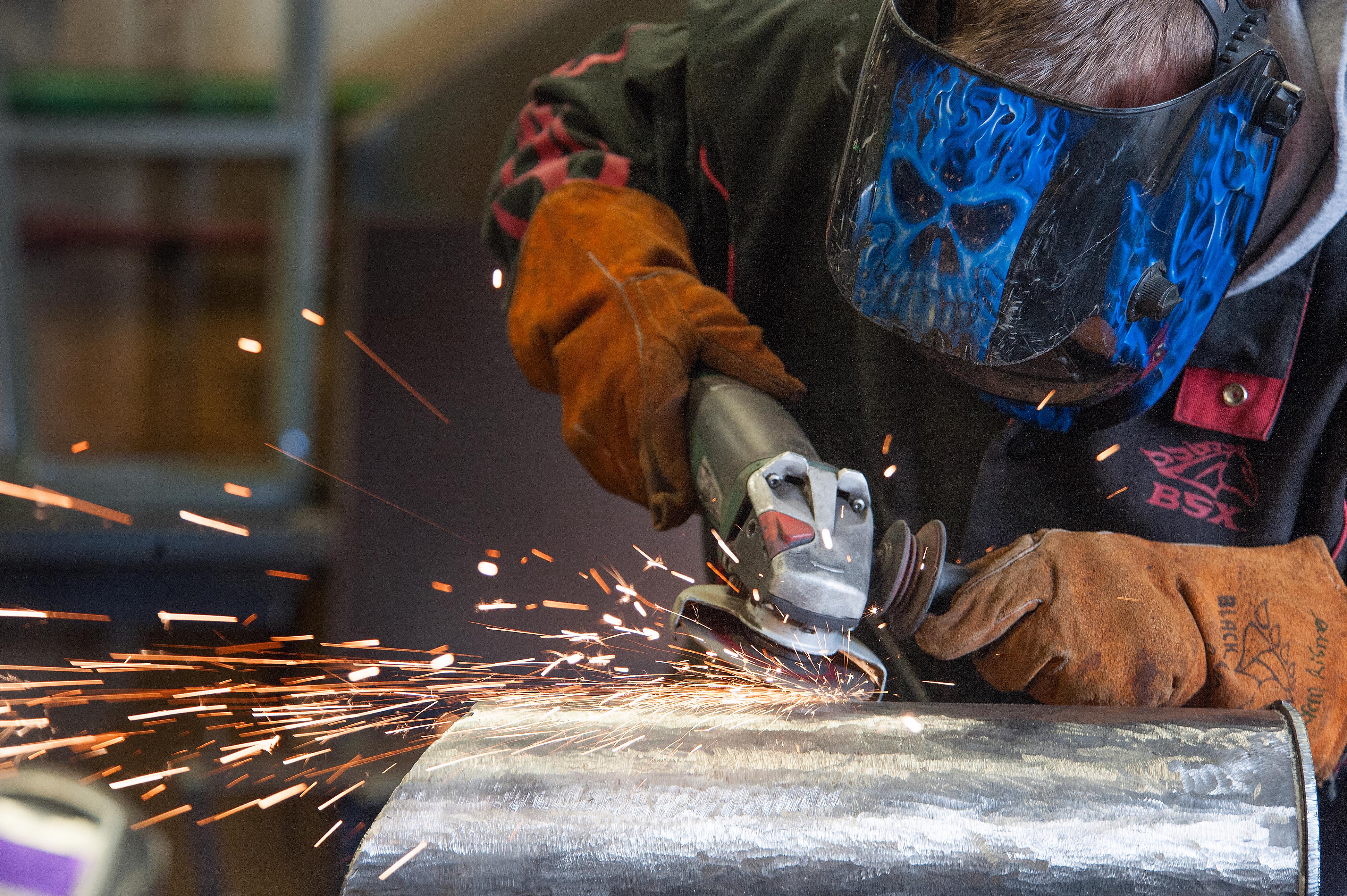 Click to see a larger version
Skip to end of gallery
Skip to start of gallery
Click to see a larger version
Skip to end of gallery
Skip to start of gallery
-
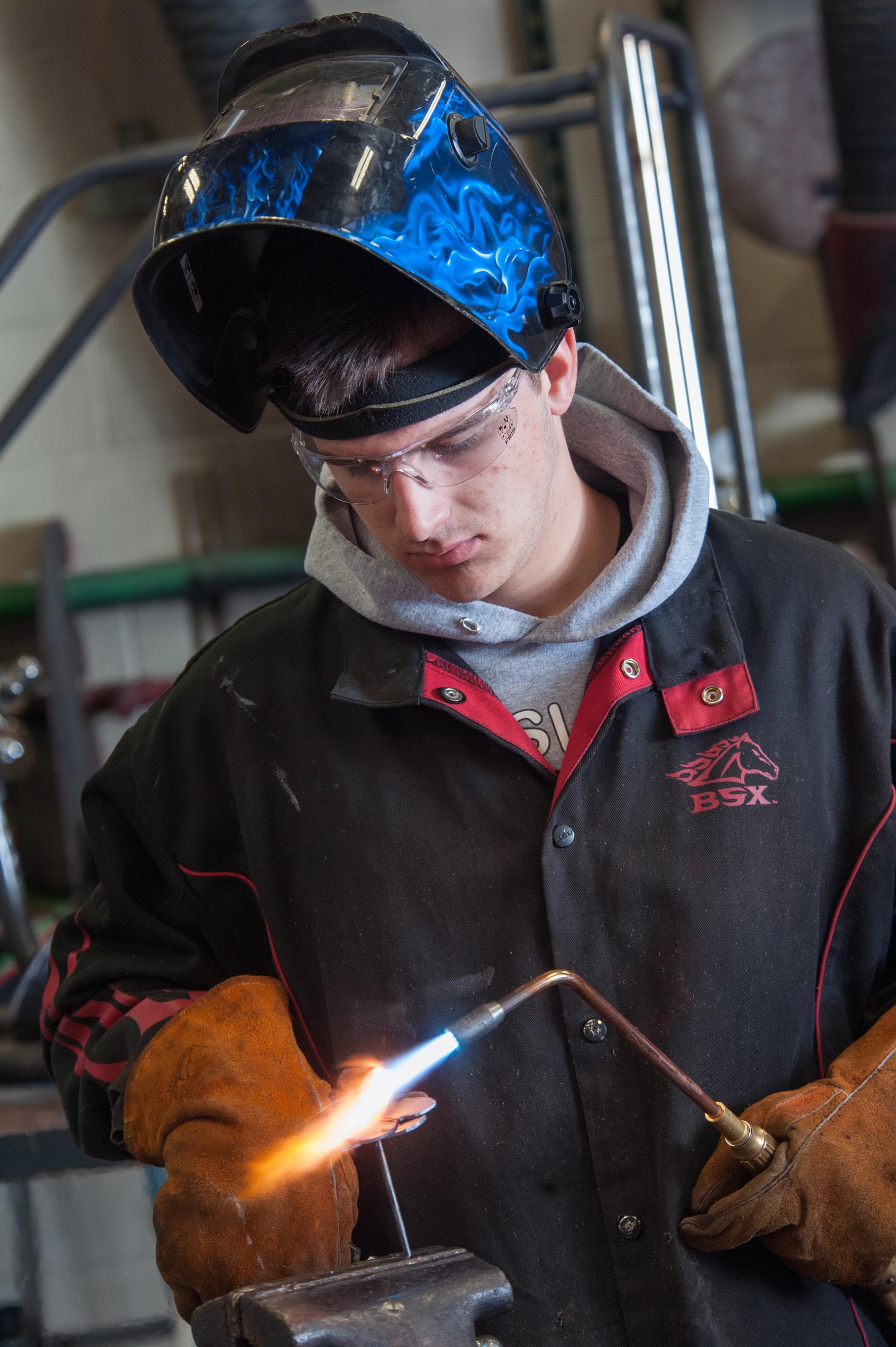 Click to see a larger version
Skip to end of gallery
Skip to start of gallery
Click to see a larger version
Skip to end of gallery
Skip to start of gallery
-
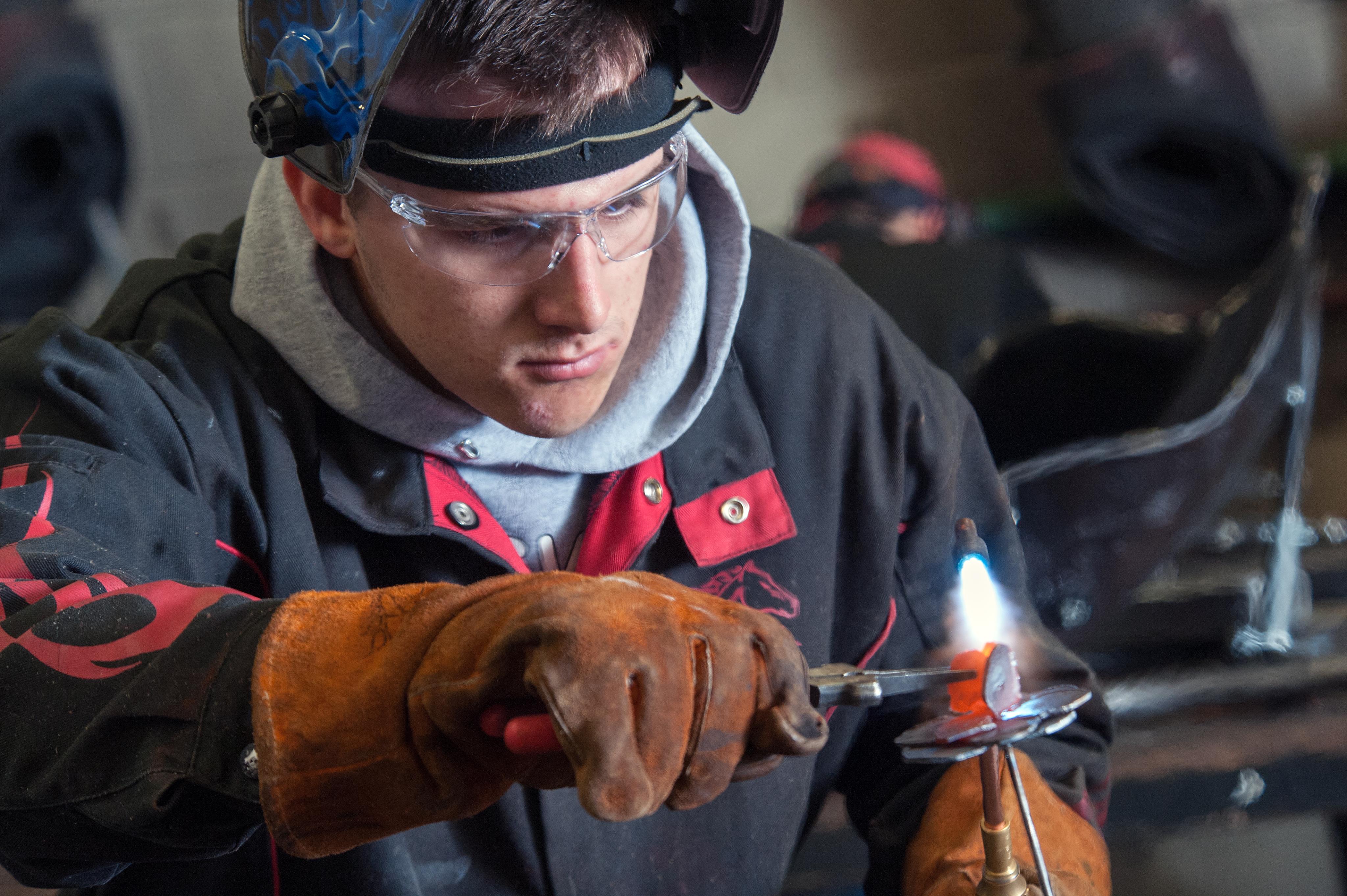 Click to see a larger version
Skip to end of gallery
Skip to start of gallery
Click to see a larger version
Skip to end of gallery
Skip to start of gallery
-
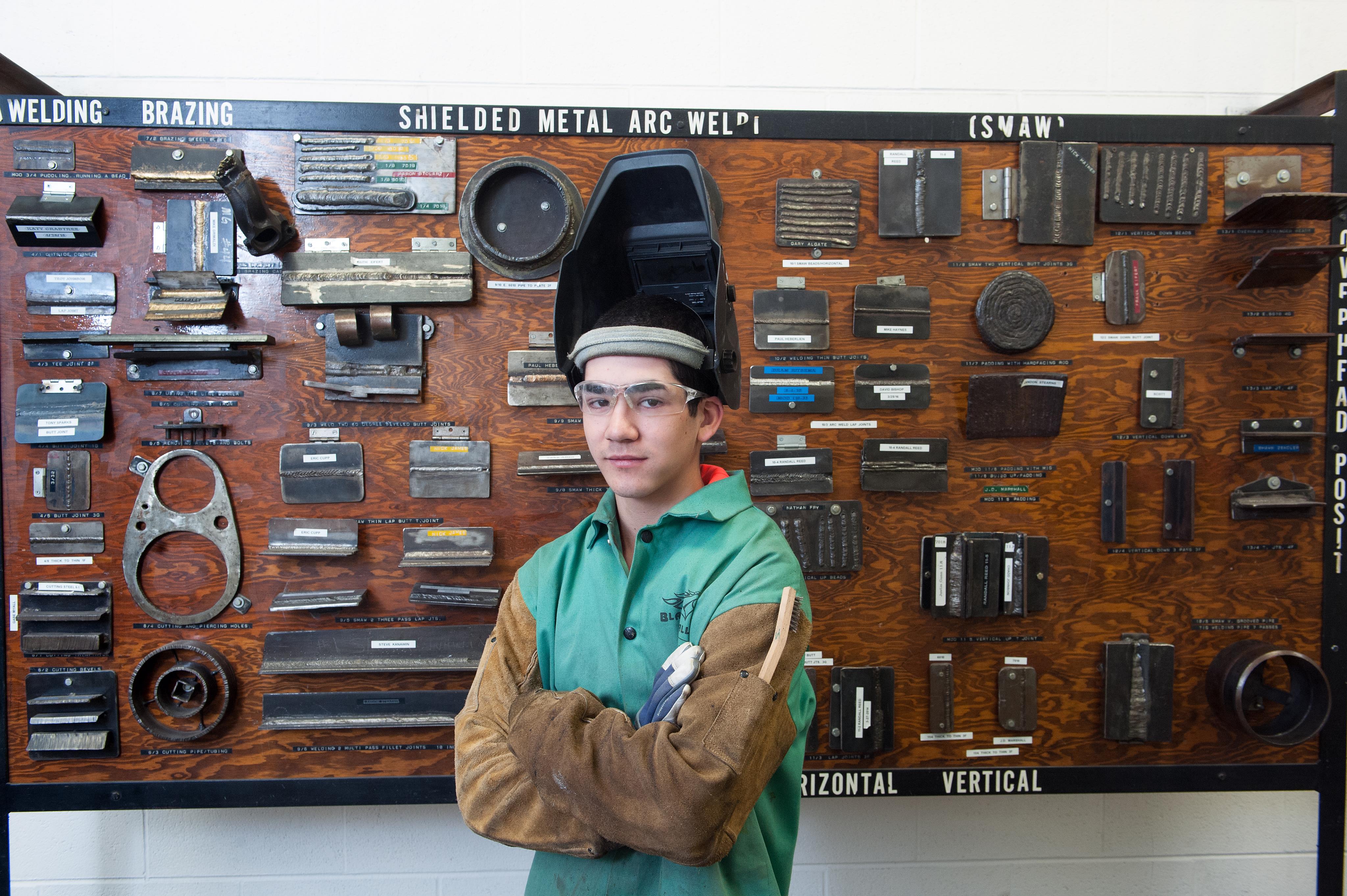 Click to see a larger version
Skip to end of gallery
Skip to start of gallery
Click to see a larger version
Skip to end of gallery
Skip to start of gallery
Welding Program Virtual Tour
Student Testimonial
About Welding Technology
2 year program
Offered AM and PM
Skills Students Leave With:
Welding Concepts
Welding Repair
Safety Training
Math and Measurement
Blueprint Planning
